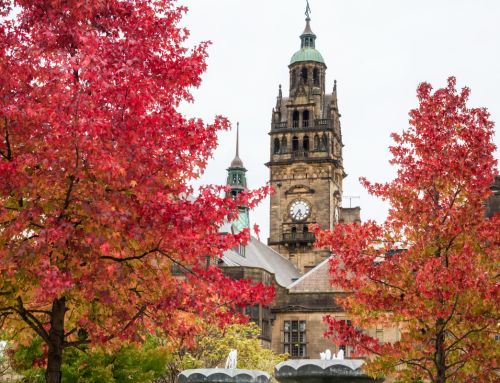The British Royal Family stands as one of the most recognisable and enduring symbols of the United Kingdom, drawing global attention and fascination. Though, in modern times, they hold no political power, their cultural influence and ceremonial roles remain significant.
As figureheads of the United Kingdom, they represent tradition, continuity, and unity, with deep ties to British history and identity. For tourists visiting the UK, the royal family offers a glimpse into a world of pageantry, heritage, and royal residences that continue to captivate millions.
From the grandeur of Buckingham Palace to the spectacle of royal ceremonies, the royal family plays a vital role in shaping the image of Britain on the world stage. Whether you’re interested in historical events or the modern-day royal figures who grace media headlines, understanding the monarchy adds more fascination and an element of wonder to any trip to the UK.
A Brief History of the British Royal Family
The British Royal Family has a history that goes back over a thousand years to the Anglo-Saxon period. Monarchs like Alfred the Great made a big impact during this time. In 1066, the Norman Conquest changed everything, and William the Conqueror started a new royal line.
Throughout the years, the British monarchy faced many challenges. These included wars, poverty, plagues, changes in religion, and fights for power. The Tudor dynasty, especially during Henry VIII’s reign, played a key role in the Protestant Reformation in England. The Stuart dynasty dealt with many problems, leading to the English Civil War and a short time when England had a republic. In the 18th century, the Hanoverian line brought stability, which helped pave the way for the modern royal family we know and love today.

King Henry VIII.
Origins and Evolution Over the Centuries
The idea of monarchy in England changed over time. In earlier days, kings and queens had total power over the country, its people, and the laws that governed them. However, as centuries went by, the role of the monarchy gradually shifted to a more balanced one. The signing of the Magna Carta in 1215 was a key moment in reducing the power of the monarch.
Then, the Glorious Revolution in 1688 helped to strengthen Parliament’s role in running the government. It created a constitutional monarchy where the King or Queen’s power is limited by laws. This balance between the monarchy and Parliament is what the British political system is known for.
Today, the monarchy is still changing to fit the world we live in. The monarch is the head of state and represents national unity, but their job is mostly ceremonial and they hold no power over law-making, but that doesn’t mean they are not influential. Their influence lies in their status and the adoration of the British public, influencing everything from fashion to British culture! They now focus primarily on upholding beloved British traditions and supporting charities.
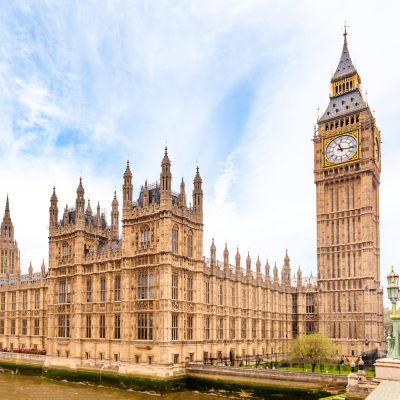
Modern day British Parliament.
Key Historical Milestones and Their Impact
The British Royal Family today is most commonly related to the time of Queen Elizabeth II, Britain’s most beloved and longest-reigning monarch. Her coronation in 1953 started a phase of big social and political changes. She was known for her strong leadership and duty, making her a respected person worldwide.
Along with her husband, Prince Philip, Duke of Edinburgh, Queen Elizabeth faced many challenges. These included decolonisation, new emerging technology, political unrest, and changes in social norms. They both worked hard in public service and helped keep the monarchy important in a changing world.
Now, with King Charles III taking the throne, the monarchy is starting a new era. His reign will focus on environmental issues, interfaith discussions, and ongoing changes in the monarchy.

Queen Elizabeth and Prince Philip
The Current Members of the British Royal Family
The British Royal Family includes those who are closest to the monarch. This group features the monarch’s spouse, children, grandchildren, and their families. While there are many members, the main ones are known for doing official work and being active in public life.
These key figures include King Charles III and Queen Consort Camilla, Prince William, the Prince of Wales, and Catherine, the Princess of Wales, along with their children. Other important members are Prince Harry, the Duke of Sussex, and his wife, Meghan Markle. Let’s take a quick look at them in more detail:
King Charles III
King Charles III became the monarch of the United Kingdom in 2022 following the death of his mother, Queen Elizabeth II. Born in 1948, Charles is the longest-serving heir apparent in British history, having waited over 70 years to ascend the throne. In July 1981, the then Prince Charles married the late Princess Diana. He faced much public scrutiny after their separation when he married the now Queen Consort Camilla.
Known for his deep commitment to environmental causes, architecture, and social issues, Charles has been an outspoken advocate for sustainability and conservation. As king, he continues the ceremonial duties of the monarchy, serving as a symbol of national unity and tradition while navigating the modern expectations of the royal family.
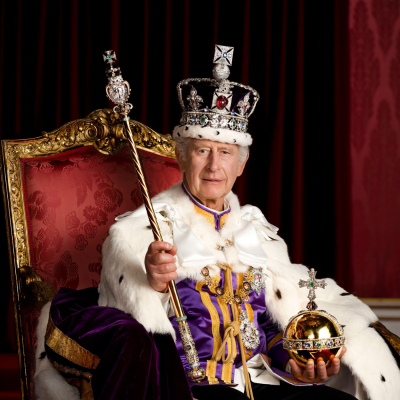
King Charles III
Queen Consort Camilla
Queen Consort Camilla, wife of King Charles III, assumed her title when Charles became king in 2022. Born Camilla Shand in 1947, she married Charles in 2005 after both had previously been married.
Initially facing public scrutiny due to her relationship with Charles during his first marriage to Princess Diana, Camilla has since earned greater acceptance through her charitable work and royal duties. She focuses on causes like literacy, domestic violence prevention, and animal welfare. As Queen Consort, Camilla supports Charles in his royal responsibilities, while maintaining her own public service commitments.

Queen Camilla
William, Prince of Wales, and Catherine, Princess of Wales
William, Prince of Wales, is the eldest son of King Charles III and the late Princess Diana, making him the next heir in line to the British throne. Born in 1982, Prince William has become a central figure in the royal family, known for his dedication to charitable work, particularly in mental health, homelessness, and environmental conservation. He also serves as a key representative of the monarchy at official events, both in the UK and abroad.
Catherine, Princess of Wales, more commonly known as Kate Middleton, married William in 2011. She quickly became a popular royal figure, admired for her poise and sense of duty. Catherine champions causes such as early childhood development, mental health awareness, and the arts. Together, William and Catherine represent the future of the monarchy, balancing royal traditions with a modern, relatable approach to public service. They live at Kensington Palace with their three children, Prince George, Princess Charlotte, and Prince Louis.
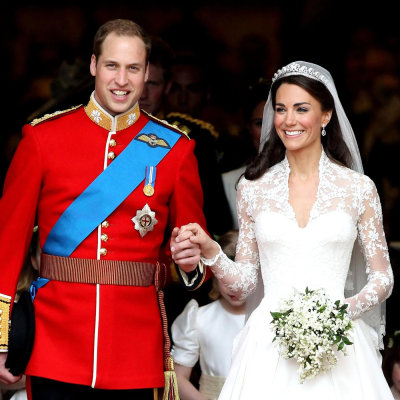
Prince William and Princess Catherine on their wedding day.
Prince Harry and Meghan Markle
Prince Harry, Duke of Sussex, is the younger son of King Charles III and the late Princess Diana. Born in 1984, Harry spent a decade in the British Army, including two tours in Afghanistan, and is known for his charitable work, particularly founding the Invictus Games for wounded veterans. In 2018, Harry married Meghan Markle, an American actress famous for her role in the TV series Suits.
Meghan, Duchess of Sussex, brought a touch of Hollywood glamour to the royal family, with her successful acting career and high-profile lifestyle capturing worldwide attention. Her background as a glamorous figure from the U.S. media spotlight added a fresh dynamic to the British monarchy, leading to increased global interest. In 2020, the couple stepped back from their official royal duties as senior working royals and relocated to Santa Barbara in the United States, where they continue to engage in philanthropic work through their foundation, Archewell, and have ventured into media production, further broadening their global influence.
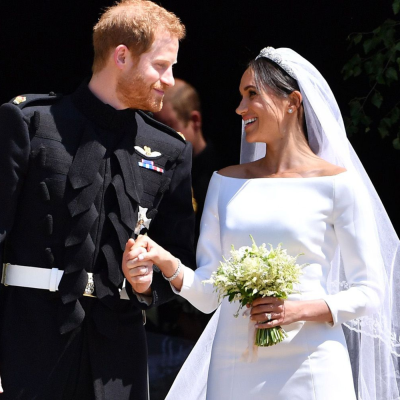
The Duke and Duchess of Sussex on their wedding day.
Prince George, Princess Charlotte, and Prince Louis
Prince George, Princess Charlotte, and Prince Louis are the three children of Prince William and Catherine, the Prince and Princess of Wales. As the next generation of the royal family, they have captured public interest from a young age.
- Prince George (born in 2013) is the eldest and currently second in line to the British throne. He has already started accompanying his parents to key royal events, and his future role as a monarch draws much public attention.
- Princess Charlotte (born in 2015) is known for her confident and charming public appearances. She holds a historic place in the line of succession, as changes to British law allow her to maintain her position regardless of having a younger brother.
- Prince Louis (born in 2018) is the youngest of the three and often captures attention with his playful demeanour during family events.
Though still young, the trio often appears alongside their parents at royal celebrations and holidays, and their presence signals the continuity of the British monarchy for generations to come.
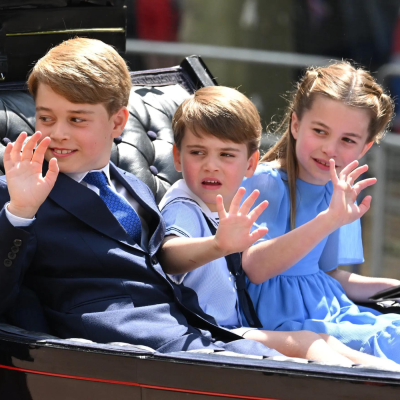
The children of the Prince and Princess of Wales.
Other Notable Royals
In addition to the immediate royal family, several other notable royals play important roles in the monarchy:
- Princess Anne, The Princess Royal: The second child and only daughter of Queen Elizabeth II, Princess Anne is known for her tireless work ethic and commitment to public service. She is involved with over 300 charities and organizations, particularly in the areas of sports, education, and international aid. Despite her lower profile, Anne is highly respected for her dedication and no-nonsense approach. She has 2 children, Zara Tindall and Peter Phillips.
- Prince Edward, Duke of Edinburgh, and Sophie, Duchess of Edinburgh: Prince Edward, the youngest son of Queen Elizabeth II, and his wife Sophie are active members of the royal family. Edward took over the Duke of Edinburgh title after his father’s passing, and he continues to support the Duke of Edinburgh Award, a youth development program founded by Prince Philip. Sophie is highly regarded for her charitable work in areas such as gender equality, eye health, and children’s welfare.
- The Late Princess Diana: Princess Diana, born Diana Frances Spencer on July 1, 1961, was the first wife of Charles, Prince of Wales. She became a global icon after her marriage to Charles in 1981 and was known for her compassion, style, and charitable work. Diana’s influence extended far beyond the British monarchy; her involvement with various causes, such as AIDS awareness, landmine removal, and children’s hospitals, earned her widespread admiration and affection. Diana’s tragic death in a car accident in Paris in August 1997 led to a profound outpouring of grief worldwide. She is remembered not only for her contributions to charitable causes but also for her enduring legacy through her sons, Prince William and Prince Harry, who continue her philanthropic work and carry forward her impact on global issues.

Prince Edward and Princess Sophie.
The Line of Succession Explained
The line of succession dictates the order in which individuals would inherit the throne following the death or abdication of the reigning monarch. Since 2002, succession laws have prioritised the monarch’s descendants based on birth order, regardless of gender.
Here are the first five individuals in the current line of succession:
|
Position |
Individual |
Relationship to the Monarch |
|
1 |
Prince William |
Son of King Charles III |
|
2 |
Prince George |
Son of Prince William |
|
3 |
Princess Charlotte |
Daughter of Prince William |
|
4 |
Prince Louis |
Son of Prince William |
|
5 |
Prince Harry |
Son of King Charles III |
Understanding the line of succession provides insights into the future of the British monarchy and the roles that key figures will likely play.
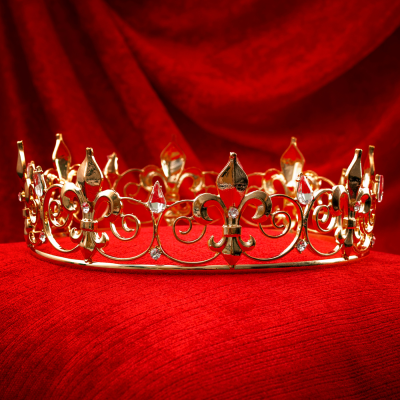
Roles and Responsibilities of Modern Royals
The modern British Royal Family does not have absolute power anymore, but they still have important roles and responsibilities. Their main job is to be figureheads and represent the United Kingdom in and out of the country.
Each year, they take part in many public engagements. This includes attending charity events, opening new hospitals, and supporting various initiatives related to their patronages. Their presence helps raise awareness for important causes and sparks national pride.
Some members of the royal family serve in the armed forces. This keeps up a long tradition of royal service in the military. Other royals focus on charitable work, using their influence to promote social change and improve the lives of others.
Iconic Residences and Their Significance
The British Royal Family has residences that are not just houses; they are filled with history and show the lasting legacy of the monarchy. These large palaces have beautiful rooms and wide gardens, giving us a view into the lives of people who have influenced British history.
From the impressive Buckingham Palace to the historic Windsor Castle, these famous places attract visitors from all over the world. They remind us of the lasting interest people have in the British Royal Family.
Buckingham Palace: The Heart of the Monarchy
Buckingham Palace is one of the most famous royal homes in the world. It is the official house of the British monarch in London, and many people visit London to see its grand exterior each year. This building represents the power of the British Crown.
The palace has been the site of many important events, including royal weddings, state visits, and speeches during times of war or trouble. The balcony faces The Mall and is used by the Royal Family to connect with the public on special days.
Even more than that, Buckingham Palace is the epicentre of the British monarchy. It has offices for the monarch’s team, which handles the daily work and events for the Royal Family. As a result, the palace is busy throughout the year.
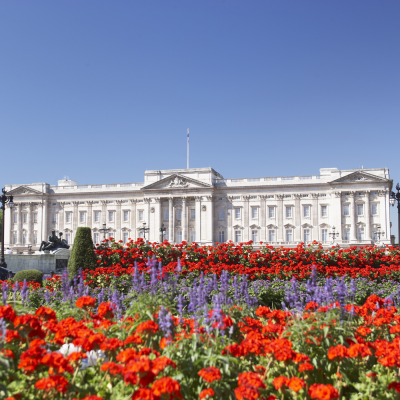
Buckingham Palace in spring.
Windsor Castle and Other Esteemed Estates
Beyond the busy capital, the Royal Family goes to other historic homes, each with its own charm and importance. Windsor Castle is just outside London. It is the largest inhabited castle in the world and has been a royal home for over 900 years, and the monarch often chooses it as a weekend getaway!
Other important places include Balmoral Castle in Scotland. This castle was bought by Queen Victoria and Prince Albert as a private home. Sandringham House in Norfolk is another favourite, typically used for Christmas and New Year celebrations. These places give the Royal Family a bit of privacy and a chance to relax away from the public, enjoying moments of everyday life alongside their official work.
Kensington Palace is where the Prince and Princess of Wales live, and Gatcombe Park is the home of Princess Anne. These residences show the different needs and roles of today’s Royal Family.
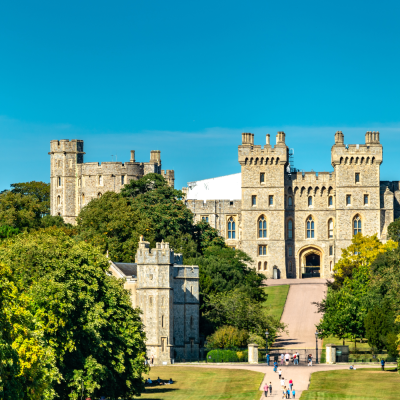
Windsor Castle.
Royal Traditions and Ceremonies
Few countries can match the United Kingdom when it comes to pageantry and ceremony. The British Royal Family takes part in many traditions and events all year long, and these events give people a chance to see the beauty and prestige of the monarchy. These lively shows are full of meaning and history, and they attract attention from people both in the UK and around the world.
The Colourful Pageantry of the Trooping the Colour
Every June, London comes alive with Trooping the Colour. This event is a long-standing tradition that celebrates the official birthday of the British monarch. It features a colourful military parade that shows the skill and majesty of the British Army.
The main attraction is the Queen’s Birthday Parade. During this parade, the monarch rides down The Mall from Buckingham Palace to the Horse Guards Parade, with a mounted escort. This procession is full of history and meaning, attracting hundreds of thousands of spectators along the streets.
The event ends with an amazing Royal Air Force flypast. Aircraft fly over Buckingham Palace as the Royal Family watches from the balcony. This tradition represents national pride and military skill, and it is a loved part of the British calendar.
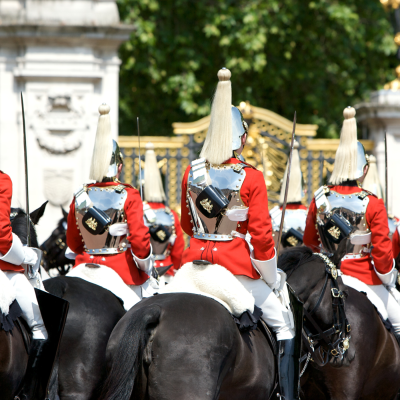
Trooping the Colour.
State Banquets and Coronations: A Glimpse Into Regal Life
State occasions give us a rare look into the grand and formal world of royal life. Coronations are the best example of this, they mark the official start of a new monarch’s reign. Full of old rituals and priceless items, coronations are very important moments in history.
State banquets, held for visiting leaders, also show off royal hospitality. These fancy events take place in the beautiful Buckingham Palace. They feature elaborate rules, delicious food, and wonderful music, highlighting the best of British hospitality.
From the seating plans to the polite toasts, every small detail at a state banquet shows the majesty of the British monarchy. These traditional events are important for diplomacy and give us a great look into a world filled with royal formality and grandeur.
The Royal Family’s Influence on British Culture
The British Royal Family plays an important role in British culture. They help shape traditions and attract a lot of public interest. Events at Buckingham Palace are very popular, along with royal weddings. People love following royals like King Charles III, the Duchess of Sussex, and Prince William. Their influence can be seen in fashion trends, media coverage, and even in tourism. The royal family’s presence in popular culture shows how much people still love the monarchy and the traditions in British society.
Patronages and Charitable Efforts
One big way the Royal Family affects British life is through their charitable work, with many members supporting different organisations. They help causes like healthcare, education, the arts, and environmental issues. They join in fundraising events, promote awareness campaigns, and use their influence to help those in need. This shows their commitment to public service and makes them role models for positive change.
When they team up with charities, the Royal Family highlights important social issues and encourages others to take part. This creates a culture of giving and responsibility in the United Kingdom and beyond, and their dedication to helping others shows their deep values of kindness and commitment to service.

Fashion, Trends, and Pop Culture
The Royal Family has a big impact on fashion. What they wear often sets trends and helps British designers gain attention. For example, Queen Elizabeth II loved elegant hats, while Catherine, the Princess of Wales, is known for her modern styles. Meghan, the Duchess of Sussex, also made waves with her fashion. People around the world pay close attention to their outfits and often take inspiration from them.
The “Kate Middleton effect” shows how powerful this influence is. When the Princess wears something, it can sell out in just a few hours. Meghan’s style, which shows off her California background and focus on eco-friendly brands, has also caught the eye of many people.
The Royal Family affects hairstyles, accessories, and even baby names. Their choices mix tradition with modern trends, and this connection between royalty and popular culture gives many people ideas about style and what’s trendy.
There is even an award-winning TV show based on the family, called ‘The Crown’, and it’s one of the best TV shows to watch to improve your English!
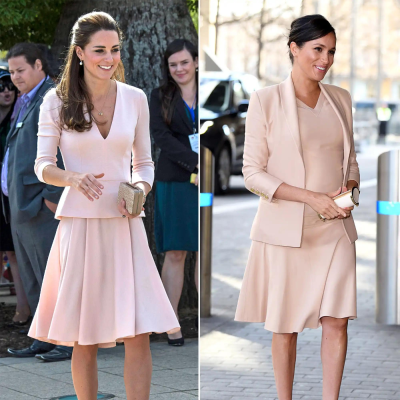
Princess Kate and Meghan Markle are both known as modern-day style icons.
The Fascinating World of the British Royal Family: Final Thoughts
The British royal family continues to captivate and intrigue people around the globe with its blend of tradition, history, and modernity. From the ceremonial grandeur of Buckingham Palace to the personal stories of its members, the monarchy represents a living bridge between the past and the present.
Whether through the dedication of King Charles III, the dynamic presence of Prince William and Catherine, or the global influence of Prince Harry and Meghan, their public roles, charitable efforts, and historic residences provide a unique lens into British heritage, making them a compelling subject for both admirers and curious travellers alike.
As the monarchy evolves, it remains a symbol of continuity and tradition, offering an enduring fascination that connects people across generations and borders.




